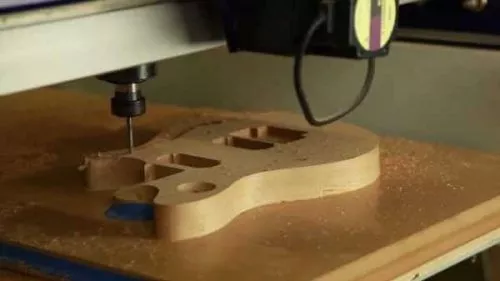How to Make A Home Made CNC Router
- Complete Home Remodeling Diy
- May 30, 2023
- 3 min read
Updated: Jun 21, 2023
CNC Router Overview
A CNC router, also known as a computer numerical control router, is a computer-controlled cutting machine used for precision cutting, shaping, and carving various materials such as wood, plastic, metal, foam, and composites. It operates on the principles of computer-aided design (CAD) and computer-aided manufacturing (CAM).
The CNC router consists of several key components. The first is the router spindle, which holds the cutting tool. The spindle can rotate at high speeds to perform cutting, drilling, and engraving operations. The cutting tool itself can be a router bit, end mill, or other specialized tool, depending on the desired application.
The machine's motion system comprises a gantry or table that moves in three axes: X, Y, and Z. The X-axis represents the side-to-side movement, the Y-axis represents the front-to-back movement, and the Z-axis represents the up-and-down movement. The movement of the axes is controlled by precision stepper motors or servo motors, which receive instructions from the CNC controller.
The CNC controller serves as the brain of the machine. It interprets the instructions from the CAD/CAM software and sends signals to the motors, directing the precise movement of the router. The controller also regulates the spindle speed, tool changes, and other machine functions.
To operate a CNC router, a user creates a design using CAD software, which generates a digital file containing the necessary instructions for the router. The user then loads this file into the CNC controller, which converts it into a series of commands for the machine. The router follows these commands to execute the desired cuts, shapes, or carvings on the material.
CNC routers offer numerous advantages over manual cutting methods. They provide greater accuracy and repeatability, enabling the production of complex and intricate designs with consistent results. They also enhance productivity by automating the cutting process, reducing human error and speeding up production times. CNC routers are widely used in industries such as woodworking, furniture manufacturing, signage, prototyping, and more.
Here are some additional details about CNC routers:
Versatility: CNC routers are versatile machines capable of working with a wide range of materials. They can cut through materials like wood, acrylic, aluminum, foam, and even harder substances like granite and steel. This versatility makes CNC routers suitable for various applications across different industries.
Precision and Accuracy: One of the significant advantages of CNC routers is their ability to achieve high levels of precision and accuracy. The computer-controlled nature of the machine ensures consistent and repeatable results, eliminating human errors and inconsistencies that can occur with manual cutting methods.
Complex Designs and Intricate Cuts: CNC routers excel at producing complex designs and intricate cuts that would be challenging or impossible to achieve manually. The ability to precisely control the router's movement allows for the creation of detailed engravings, 3D carvings, intricate joinery, and complex geometries.
Speed and Efficiency: CNC routers are generally faster than manual cutting methods. Once the design is programmed and the material is secured, the machine can work continuously and swiftly, significantly reducing production time. This speed and efficiency make CNC routers ideal for large-scale production runs.
Automation and Workflow Integration: CNC routers can be integrated into a broader computerized workflow, streamlining the manufacturing process. They can be linked to design software, material handling systems, and other machinery, allowing for seamless automation and increased productivity.
Cost-Effective: While CNC routers can represent a significant investment, they offer long-term cost savings. They minimize material waste by optimizing cuts, reduce labor costs by automating processes, and provide consistent quality, reducing the need for rework or scrap.
User-Friendly Operation: Modern CNC routers often come with user-friendly interfaces and intuitive software, making them accessible to operators with varying levels of expertise. With proper training and understanding of the software and machine capabilities, users can quickly become proficient in operating CNC routers.
Customization and Prototyping: CNC routers enable rapid prototyping and customization. They allow for quick iteration and adjustments, making them invaluable tools for designers, architects, and manufacturers who need to test and refine their ideas before full-scale production.
Overall, CNC routers offer precision, efficiency, and versatility, making them indispensable tools in many industries. They have revolutionized the way complex designs are created and manufactured, empowering businesses to produce high-quality products with speed and accuracy.









Comments